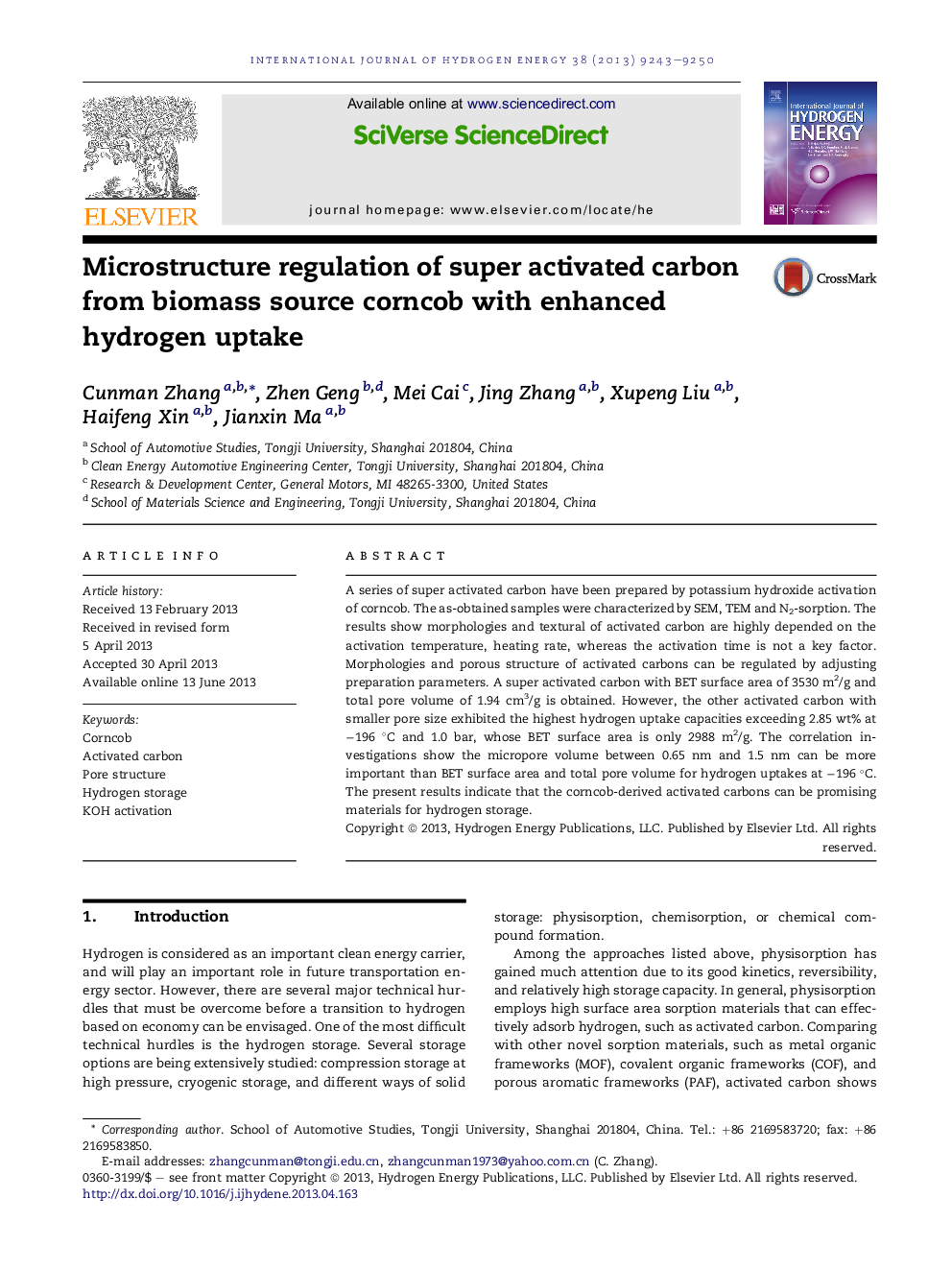| Article ID | Journal | Published Year | Pages | File Type |
|---|---|---|---|---|
| 7722566 | International Journal of Hydrogen Energy | 2013 | 8 Pages |
Abstract
A series of super activated carbon have been prepared by potassium hydroxide activation of corncob. The as-obtained samples were characterized by SEM, TEM and N2-sorption. The results show morphologies and textural of activated carbon are highly depended on the activation temperature, heating rate, whereas the activation time is not a key factor. Morphologies and porous structure of activated carbons can be regulated by adjusting preparation parameters. A super activated carbon with BET surface area of 3530 m2/g and total pore volume of 1.94 cm3/g is obtained. However, the other activated carbon with smaller pore size exhibited the highest hydrogen uptake capacities exceeding 2.85 wt% at â196 °C and 1.0 bar, whose BET surface area is only 2988 m2/g. The correlation investigations show the micropore volume between 0.65 nm and 1.5 nm can be more important than BET surface area and total pore volume for hydrogen uptakes at â196 °C. The present results indicate that the corncob-derived activated carbons can be promising materials for hydrogen storage.
Related Topics
Physical Sciences and Engineering
Chemistry
Electrochemistry
Authors
Cunman Zhang, Zhen Geng, Mei Cai, Jing Zhang, Xupeng Liu, Haifeng Xin, Jianxin Ma,
